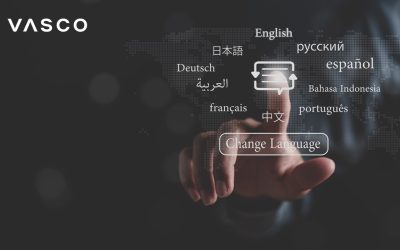In the vast universe of the Star Wars saga, epic battles, iconic characters, and profound philosophies captivate audiences. Yet, the array of languages adds another layer of richness, enhancing the narrative with cultural depth.
Table of Contents:
The franchise introduces languages from the melodic tones of Twi’lek to the guttural shouts of Shyriiwook, the language of the Wookiees. This linguistic diversity reflects the complexity of our own world’s languages.
This post delves into the rich linguistic landscape of most Star Wars languages you can learn. We will examine the structure, usage, and cultural significance of its most notable languages.
Whether you’re a linguistics aficionado or a casual fan, this exploration reveals how language breathes life into the beloved universe of Star Wars!
FAQ:
What is Aurebesh language in Star Wars?
How many Star Wars languages are there?
Do Siths have their own language?
Do Wookies have their own language?
Yes, they do, and it’s called Shyriiwook. Interestingly, it was never fully developed to be an actual language. It’s one of those exceptions where the sounds made by actors are more or less random.
Who created languages in Star Wars?
What exactly is a constructed language?
Constructed languages, or conlangs, are a cornerstone in science fiction and fantasy. They create immersive experiences that engage fans deeply in fictional universes.
Therefore, conlangs are in opposition to natural languages (so called “real languages”) that have appeared in human civilization and have been influenced by their culture and historic events.
In Star Wars, these languages do more than facilitate communication across diverse species. They also highlight cultural identities and social hierarchies. Consider Aurebesh, the script found on monitors and signage, which is a transcription of Basic. This is a standardized galactic language, similar to English or Mandarin on Earth.
Therefore, creating conlangs is an interesting method for enriching the lore of any fictional universe, and making it more immersive for audiences.
The role of languages in Star Wars
Languages in Star Wars are not merely a tool for communication. They are a critical element of world-building and character development.
-
It shapes the viewer’s perception of the cultural and political landscape of the galaxy. For example, the dominance of Basic (the equivalent of English in the Star Wars universe) speaks to the influence of the Galactic Empire, but even before that, it was associated with the Republic. This connection is evident even in earlier periods, such as in the game “Knights of the Old Republic,” set around 4000 years before the films, where Basic is already established. It’s important to note, however, that Disney has removed this game from the canon, which means certain key details, including those about languages, may differ between sources.
-
Languages in Star Wars also serve as a narrative device to depict exclusivity and inclusion within the galaxy’s diverse communities. Characters who understand multiple languages often possess strategic advantages, illustrating the importance of communication skills across different cultures.
Overview of Major Languages in Star Wars
But hey, what language do they speak in Star Wars?
Well, it’s not just one! So, maybe a better question to ask is how many languages are there in Star Wars?
Usually, it’s said that there are 14 main languages spoken in this universe. Still, there are some some detailed lists, including as many as 68 different languages! (here you can find an example of such a comprehensive list).
Though we will not discuss each and every one of them, we will consider the most crucial ones.
So, let’s delve deeper into some of nearly all Star Wars languages that shape the interactions and conflicts within this vast cosmos.
Basic
What is the Star Wars language called? When searching for the answer, you’re probably thinking of the Basic language spoken commonly across the whole Galaxy.
However, it’s simply represented by English in Star Wars films, Clone Wars series, and other Star Wars media. So, even though it’s a part of fictional languages in this universe, it wasn’t artificially crafted.
Huttese
- Origin and Characteristics: Huttese is primarily an indigenous language spoken by the Hutts, a slug-like species known for their roles as gangsters and crime lords. This language blends long, drawn-out vowels with harsh consonants, creating a sound that is both commanding and slippery, mirroring the deceptive nature of its speakers.
- Notable Speakers and Usage: Jabba the Hutt, perhaps the most infamous of his species, frequently uses Huttese to issue commands and conduct illicit business deals, making it a language synonymous with the underworld.
- Cultural Significance: Huttese’s prevalence in the Outer Rim territories signifies the economic and social control exerted by the Hutts over these less governed spaces.
Bocce
- Importance as a Trade Language: Bocce acts as a lingua franca among traders and pilots across numerous planetary systems, designed to facilitate straightforward and efficient communication.
- Linguistic Structure: Known for its simplicity and adaptability, Bocce incorporates elements from various languages, reflecting the diverse interactions in the galaxy’s trade networks.
- Common Usage: It’s often heard in bustling marketplaces and spaceports, where quick and clear communication is essential for business transactions.
Shyriiwook (Wookiee)
- Phonetics and Syntax: Native language of Wookies, Shyriiwook relies heavily on a series of growls and roars, tailored to the vocal apparatus of this species. Its complex syntax is difficult for non-Wookiees to grasp, often requiring translation droids in interspecies interactions.
- Communication Challenges: The linguistic barriers between Wookiees and other species underscore themes of alienation and cultural diversity within the galaxy.
- Notable Speakers: Chewbacca, the co-pilot of the Millennium Falcon, is the most famous Wookiee speaker. His interactions with other main characters highlight both the challenges and comedic elements that arise from language differences.
Sith Language
- Historical Context: Associated with the dark and secretive Sith Lords, this language’s origins are as ancient and mysterious as the Sith themselves.
- Linguistic Features: The Sith language includes a unique script and a complex grammatical structure, designed to be impenetrable to those outside the Sith Order. However, originally, this language was spoken by the Sith race; it had nothing to do with ideology yet.
- Usage in Rituals: Often used in dark side rituals, the language’s use in the series adds an element of foreboding and mysticism, enhancing the dark allure of the Sith.
Aurebesh
- Role in the Galaxy: Aurebesh is the standardized script seen throughout the Star Wars universe, used for most written communication of Basic.
- Visual Design: The script consists of unique characters that replace the Latin alphabet we know in the real world. Its widespread use on signs, screens, and military insignia conveys a sense of unity and standardization across the Galactic Empire and beyond.
- Learning Aurebesh: Fans and language enthusiasts often learn Aurebesh, incorporating it into fan-made content and everyday use, demonstrating its impact beyond the screen.
This concludes our Star Wars languages list.
With their distinctive sounds and scripts, they surely enrich the narrative. But on an even more important note, Star Wars written languages make it easier for fans to engage with this world on a whole new level.
The creation and evolution of Star Wars languages
The languages of Star Wars are not merely fictional constructs, but are the result of meticulous design and thoughtful evolution.
Let’s take a look at how it was done.
Crafting the Languages
- Initial Development: First introduced by George Lucas, the process of creating these languages often began with sound designers and linguists brainstorming sounds that might be characteristic of a particular species or culture. For instance, Ben Burtt, the sound designer for the original films, developed Huttese and Shyriiwook based on the characters’ physical and cultural traits.
- Linguistic Expansion: As the franchise grew, so did the need for these languages to be more fully fleshed out. What started as a few phrases or words necessary for pivotal scenes in the films expanded into more comprehensive language systems. This expansion was often driven by the needs of the expanding universe in books, television series, and video games.
Evolution across media
- Incorporation in Expanded Universe: The Star Wars Expanded Universe (now branded as Legends) played a crucial role in enriching the linguistic tapestry. Authors and creators added to the lexicon and grammar, providing fans with a deeper understanding and appreciation of the languages.
- Community Involvement: Fans have significantly influenced the evolution of these languages, using them in fan fiction, at conventions, and in everyday communication. This fan engagement has led to the development of learning materials and the creation of a Star Wars language translator like the of Arabesh alphabet (you can check it here).
Impact on Fan Culture
Through these languages, Star Wars not only entertains but also educates and engages its audience. This universe truly is a living, evolving linguistic phenomenon.
- Language Learning and Usage: Enthusiastic fans often engage with these languages by learning to speak or write them, participating in communities where these skills are prized. For example, websites and apps offer courses and tools to learn languages like Shyriiwook, appealing to those fans who wish to immerse themselves even deeper into Star Wars lore.
- Cultural Resonance: The languages have become a way for fans to connect with each other and with the franchise at a more intimate level. They serve not only as a testament to the richness of the Star Wars universe but also as a bridge between the fictional and the real world, enhancing the communal and interactive aspects of fan culture.
Learning and using Star Wars languages
Fans of Star Wars often take their passion for the saga to the next level by learning to speak and write in the languages depicted in the films and series.
Here are some useful phrases and their significance in fan interactions:
- Basic (Galactic Basic Standard):
- “May the Force be with you” – A common farewell and well-wishing phrase.
- “I have a bad feeling about this” – Often used humorously among fans to express apprehension.
- Huttese:
- “This Sa interesting” (This is interesting)
- “Achuta” (Hello)
- Shyriiwook (Wookiee):
- Due to its complex phonetics involving growls and roars, exact transliteration into Basic is challenging, but fans enjoy mimicking the sounds.
- Mando’a (Mandalorian language):
- “Su cuy’gar ogir” (Hello there) – A standard greeting in Mando’a.
- “Ni kar’tayl gar darasuum” (I love you) literally translates to “I hold you in my heart,” a phrase cherished by fans and used in more personal communications. Do you wish to know more than just how to say I love you in Star Wars? Check our article, where we see how to proclaim love in several languages.
Interested in languages beyond Star Wars?
As we continue to marvel at the linguistic complexity of Star Wars, why not take your interest in languages beyond the screen?
With the Vasco Translator, a cutting-edge universal translator, you can explore over 100 real-world languages with ease. You can use a voice translator that lets you talk with people freely, or a photo translator that makes any text in your surroundings understandable. And many, many more!
Imagine if, one day, we might even add Star Wars languages to our repertoire! Would you like an Aurebesh translator? Until then, the Vasco Translator remains your best companion in uncovering the languages of our world. Dive into new cultures, learn new phrases, and connect with people around the globe.
Who knows? The next language you learn could be as thrilling as Aurebesh!











